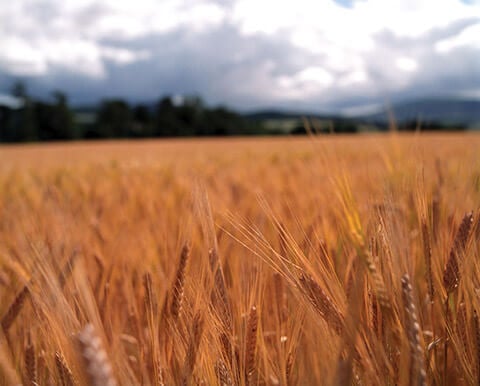How to make single malt whiskey?
Single
malt whiskey is one of the most revered spirits in the world. But don't you know the way to make it? Let's discover by this article
It has such scope for variation, it can offer complexity or simplicity, unbridled power or a subtle whisper. To legally be called a single malt Scotch, the whisky must be distilled at a single distillery in Scotland, in a copper pot still from nothing other than malted barley, yeast and water. It must then be aged in an oak cask for at least three years and a day, and be bottled at no less than 40% abv.

Single malt whisky must be made with 100% barley
Currently there are around 90 operating malt whisky distilleries in Scotland – it is difficult to be precise, since sometimes distilleries go out of production for periods, in order to balance stock levels. Single malts from a further 30-odd now closed distilleries may still be found.
Although made from very simple materials – malted barley, water and yeast – the make of each distillery has an individual character, owing to a variety of factors, such as the length of fermentation time, the style and size of the stills, and how they are operated, the type of condensers used and amount of spirit saved (called ‘the cut’).
By law, Scotch (both malt and grain whiskies) must be matured in oak casks in Scotland, and the casks themselves can make a huge contribution to the flavour of the finished product, according to a) how long the whisky has been left to mature, b) how often the individual cask has been used to mature Scotch and c) whether the cask is made from European oak or American oak. This makes it difficult to identify the mature products of individual distilleries.
Since at least the 1880s, blenders have identified different styles of whisky coming from different parts of Scotland. The original division, dating from the 1780s, was between ‘Lowland’ whisky and ‘Highland’ whisky. Then the whiskies made in Campbeltown and Islay were discerned to be different, and the whiskies of Speyside were added to the list.
With the dramatic growth of interest in single malt whiskies since the 1980s, the ‘Highland’ region has been sub-divided into Northern, Western, Eastern, Southern and Islands.
In truth, regional differences in the style and flavour of malt whiskies has more to do with tradition (how a malt is made in one place or another) than terroir, and although it is not possible to make a malt with identical character to another in a different distillery, it is possible to imitate a regional style out-with the region in question.
For other awesome news: vitamin c food



0 nhận xét